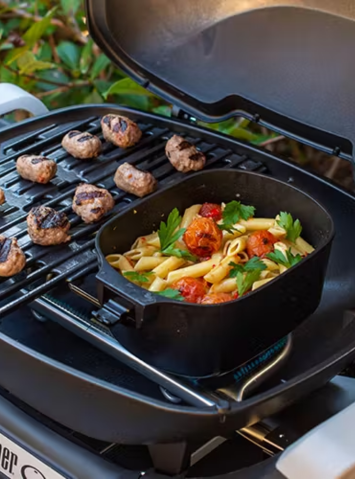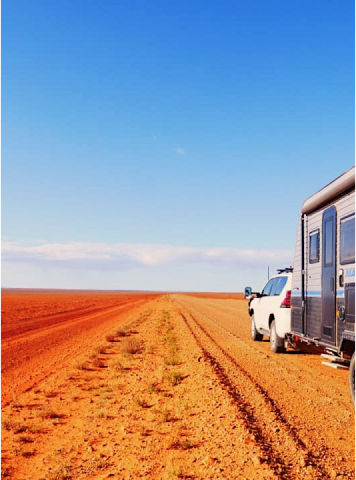How to Prepare Your 4WD for Camping
20th Oct 2022
A 4WD is often a vehicle of choice if you are planning your next camping trip, particularly if you intend to tackle some of Australia’s amazing 4WD tracks. It offers fun and ease to travel off-road, and space to carry additional luggage.
With all these advantages in mind, you’ll never want to see a downside to it.
Imagine standing with an out-of-order 4WD in the middle of the night with no help. Will you ever want to see this situation? We guess NOT.
If you want to avoid this situation and make your camping experience a positively happier one, do not forget to prepare your 4WD fully before you hit the road.
Preparing your 4WD doesn’t only mean packing it with all the necessary camping stuff or setting it up to explore terrains. In reality, it means both.
With a 4WD, you can take it to multiple terrains, carry luggage, and have good storage space to accommodate it; you’ll also require your vehicle to be in perfect shape.
Let’s consider some essential points that will resolve your query about how to prepare your 4WD for camping.
What Tyre Pressure For 4WD On Road?
The tyres of the 4WD support your vehicle and luggage weight and offer speed and stability to explore various terrains. The speed, tyre construction, and terrain type are some of the important factors to evaluate while preparing for 4WD camping, but at the same end, adjusting the tyre pressure for 4WD on the road is equally important. The pressure you need in your 4wd varies from each terrain and will change as your tyres warm up or cool down. We have put together a basic guide below, however, please note this can change depending on your individual setup, weather conditions, and terrain you are travelling on and tyres you use:
- Dirt Roads 25-30 PSI
- Mud/Rocks/General 4wd terrain - this depends on your individual set-up, however, 18- 25 PSI is a good guide
- Soft Beach/Sand 15-20 PSI
Check out our Tyre Compressors and Tyre Accessories to make sure your tyre set-up is right before you go four-wheel driving.

When Should 4WD High Range Be Used?
There are low and high ranges in a 4WD to give you better control over your vehicle. You may secrete more adrenaline and jump into pushing that high-range button but wait before your impulse takes control over your mind. It's only recommended using a 4WD high range when you are on an open track and about to hit 100 km/h or exceed this speed for better traction. Or you may also use the high range on snowy slippery surfaces with less speed to control 4WD efficiently.
Do You Need A 4WD To Go Camping?
We see tour and camping groups posting their advertisements with a 4WD. But do you need to delay your camping plan if you don’t have a 4WD? Let’s find the answer.
A 4WD offers more control over your vehicle and a safer experience when you explore different terrains and rough weather conditions. When you go out on camping tracks, you’ll learn that only a 4WD vehicle can explore some of the most challenging paths.
But this shouldn’t stop you from camping. A 2WD vehicle is a good alternative in this regard. Using it, you can go to most, if not all, places. You can also replace your 2WD vehicle with a 4WD system.
How To Set Up Your 4WD For Camping?
While camping, you won’t want to stand with a broken 4WD or missing essentials. The simple solution to avoid any problem is to set up your 4WD for camping practically with all the necessary equipment. Here are some quick tips for setting up your 4WD for camping:
Modifying Your 4WD
You may want to add an extra or more powerful battery, canopy, bullbar, extra set of tyres, roof racks, or any other beneficial equipment to your 4WD for added comfort and peace of mind.

Tools
When camping, remember to keep tools that will help you in an emergency. The list of important tools includes a tyre pressure gauge, screwdrivers, spare fuses, electrical and duct tape, torque wrench, and many others. It's better to keep them in one place in a bag for easy accessibility.
First Aid Kit
Always carry a quality first aid kit in your 4WD before leaving for camping. Recheck the first-aid kit and critically assess if you are missing anything.
Recovery Gear
4WD Recovery gear is a first aid kit for your 4WD. Always keep them with tools and other essential materials while setting up your vehicle. It should include an air compressor, snatch strap, recovery tracks, shovel, and D-shackles.

How To 4WD Camp?
4WD camping is a common term to describe your use of a 4WD for camping. As simple as it may sound that you are using a vehicle to go to your camping destination with all the stuff. Only true camping lovers know how much fun and diversity a 4WD can add to your camping experience. You can try different ideas for 4WD camping on the internet, like rooftop tents, moving camps, base camps, or anything you like to experience.
How To 4WD On Dirt Roads?
Dirt roads are among the most challenging terrains for drivers. Although it's safer to use a 4WD than using a 2WD on dirt roads, you still need to be aware and deal with your vehicle tactfully. Always keep these tips in mind while driving your 4WD on dirt roads.
- Drive slowly, as you may lose control over your 4WD
- Control the brakes gently
- Be extra slow and cautious while moving through the corners
- Don’t shift your direction suddenly
Now that you know how to prepare your 4WD for camping, when are you leaving for your next camping trip?



















